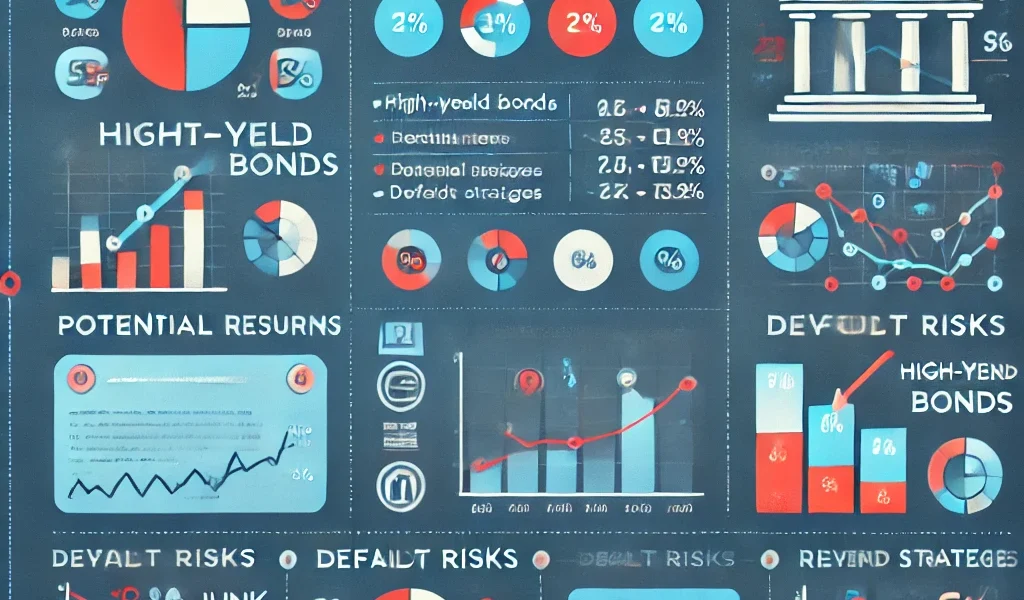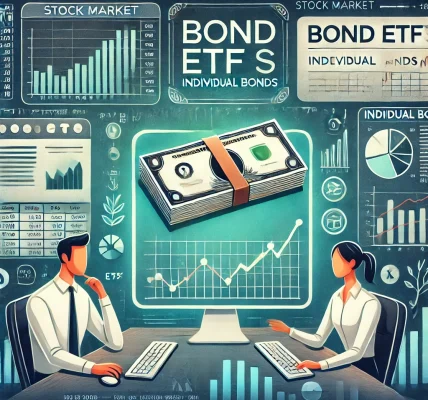Junk bonds, also known as high-yield bonds, offer investors the potential for higher returns but come with significantly higher risks. While they can be a lucrative addition to a diversified portfolio, understanding the potential rewards and hidden risks is crucial before committing to these investments.
In this in-depth guide, we will explore what junk bonds are, their advantages and disadvantages, and strategies to minimize risks while maximizing returns.
💡 What Are Junk Bonds?
📚 Definition
Junk bonds are corporate bonds issued by companies with lower credit ratings, typically rated BB+ or lower by S&P and Ba1 or lower by Moody’s. These bonds pay higher interest rates to compensate investors for the increased risk of default.
📉 Why Are They Called Junk Bonds?
The term “junk” refers to the speculative nature of these bonds due to their high probability of default. While they can offer higher returns, the issuer’s financial instability makes them riskier compared to investment-grade bonds.
📊 Credit Ratings and Junk Bonds
- Investment-Grade Bonds: Rated BBB- or higher (lower risk, lower returns)
- Junk Bonds: Rated BB+ or lower (higher risk, higher returns)
📈 Potential Rewards of Investing in Junk Bonds
💸 1. Higher Yields
Junk bonds offer significantly higher yields than investment-grade bonds, making them attractive to income-seeking investors.
✅ Example:
A high-yield bond may offer a 7-10% annual return, compared to 3-5% for an investment-grade bond.
📊 2. Potential for Capital Appreciation
If the issuing company’s financial situation improves, its bond ratings may be upgraded, leading to increased bond prices and capital gains for investors.
✅ Example:
If a company restructures its debt successfully, its bond price may rise, offering capital appreciation to bondholders.
📉 3. Portfolio Diversification
Junk bonds can diversify an investment portfolio by adding exposure to higher-yielding assets, reducing overall portfolio volatility.
✅ Tip:
Including a mix of high-yield bonds and safer assets helps balance risk and return.
🔄 4. Opportunity to Invest in Turnaround Companies
Junk bonds are often issued by companies undergoing restructuring or turnaround efforts. If these efforts succeed, investors benefit from higher returns and capital appreciation.
✅ Example:
A struggling company that recovers financially may significantly increase its bond prices.
⚠️ Hidden Risks of Investing in Junk Bonds
📉 1. High Default Risk
Junk bonds carry a significantly higher risk of default compared to investment-grade bonds.
⚠️ Impact:
If the issuer defaults, investors may lose a significant portion or all of their invested capital.
🔍 2. Price Volatility
Junk bonds are highly sensitive to market conditions, resulting in price fluctuations that can lead to losses.
⚠️ Impact:
During economic downturns, junk bond prices often decline sharply due to increased default fears.
📝 3. Liquidity Risk
Junk bonds can be harder to sell in secondary markets, especially during periods of economic uncertainty or market stress.
⚠️ Impact:
Investors may face difficulties exiting their positions without incurring losses.
📊 4. Interest Rate Sensitivity
While all bonds are sensitive to interest rate changes, junk bonds can be more vulnerable due to their high yields and lower credit quality.
⚠️ Impact:
Rising interest rates can make existing junk bonds less attractive, causing bond prices to decline.
📉 5. Credit Downgrades
If a company’s financial health deteriorates further, its bonds may be downgraded, leading to declining prices and increased risk.
⚠️ Impact:
A downgrade can trigger panic selling, further reducing bond prices.
📊 Junk Bonds vs. Investment-Grade Bonds
| Feature | Junk Bonds | Investment-Grade Bonds |
|---|---|---|
| Credit Rating | BB+ or lower | BBB- or higher |
| Interest Rate | Higher (7-10% or more) | Lower (3-5%) |
| Default Risk | High | Low |
| Price Volatility | High | Low |
| Liquidity | Low to Moderate | High |
| Potential Return | High | Moderate to Low |
🔎 How to Identify and Evaluate Junk Bonds
✅ 1. Review Credit Ratings
Look for ratings from reputable agencies such as Moody’s, S&P, and Fitch to assess the issuer’s creditworthiness.
📊 2. Analyze Financials
Evaluate the issuing company’s financial stability, debt levels, and cash flow to assess its ability to meet bond obligations.
📝 3. Understand Industry Trends
Analyze the industry’s overall health and potential risks, as some sectors may be more prone to volatility and downturns.
📉 4. Assess Economic Conditions
Junk bonds perform better in a strong economy, where default risks are lower. During economic slowdowns, they become riskier.
🛡️ Strategies to Mitigate Risks When Investing in Junk Bonds
📚 1. Diversify Your Junk Bond Holdings
Spread investments across multiple issuers and industries to reduce exposure to any single company’s default risk.
✅ Tip:
Consider bond mutual funds or ETFs that invest in high-yield bonds for built-in diversification.
📊 2. Monitor Credit Ratings Regularly
Stay informed about changes in credit ratings, as downgrades can signal increased risk.
✅ Tip:
Regularly review the financial health of bond issuers to avoid unpleasant surprises.
⚖️ 3. Invest in Junk Bond Funds
High-yield bond funds offer exposure to a diversified portfolio of junk bonds managed by professionals who actively mitigate risks.
✅ Tip:
Opt for funds with a strong track record and experienced management teams.
📈 4. Use Stop-Loss Orders to Limit Losses
Implement stop-loss orders to protect your capital if bond prices fall below a specified threshold.
✅ Tip:
Set stop-loss orders at a level that balances potential losses with the possibility of recovery.
🔄 5. Opt for Shorter-Term Junk Bonds
Shorter-duration junk bonds reduce interest rate risk and provide quicker returns, limiting the impact of prolonged market volatility.
✅ Tip:
Consider bonds with maturities of 3-5 years to minimize exposure to long-term risks.
📝 Best Practices for Junk Bond Investors
✅ 1. Assess Your Risk Tolerance
Junk bonds are suitable for investors with a higher risk tolerance and a long-term investment horizon.
📊 2. Set Realistic Expectations
While high-yield bonds offer higher returns, they are not without risk. Understanding potential losses is key to maintaining a balanced portfolio.
🔎 3. Regularly Rebalance Your Portfolio
Periodically review and adjust your portfolio to ensure that junk bonds do not overexpose you to unnecessary risk.
⚖️ 4. Consider Professional Management
Investing in junk bond mutual funds or ETFs managed by experts can mitigate some of the inherent risks.
📚 Conclusion: Are Junk Bonds Right for You?
Junk bonds can offer attractive returns but require careful evaluation and risk management. While they can be a valuable addition to a diversified portfolio, investors must remain cautious of default risks, market volatility, and liquidity concerns. By understanding the rewards and hidden risks associated with junk bonds, investors can make informed decisions that align with their financial goals.



